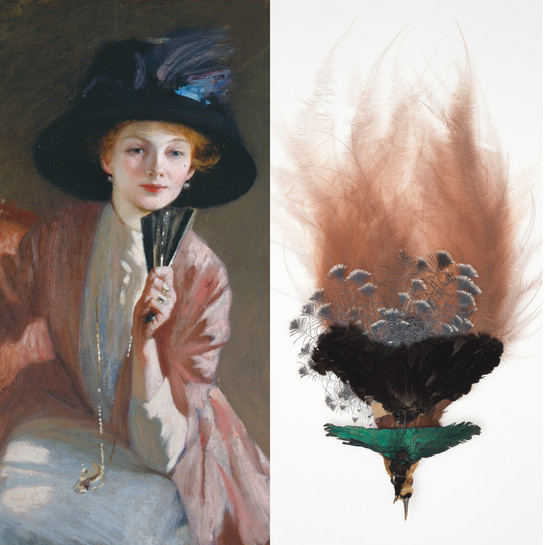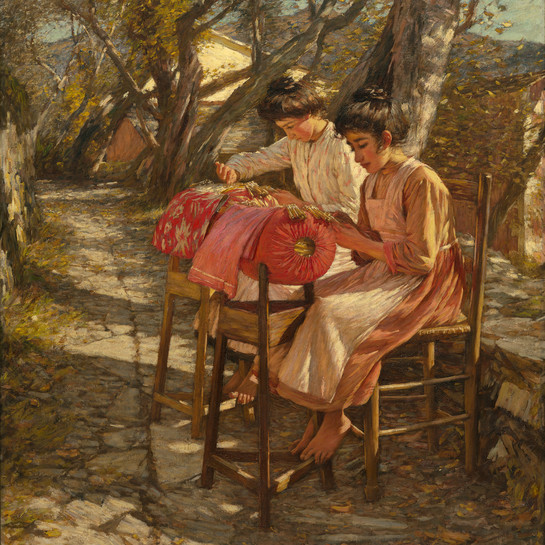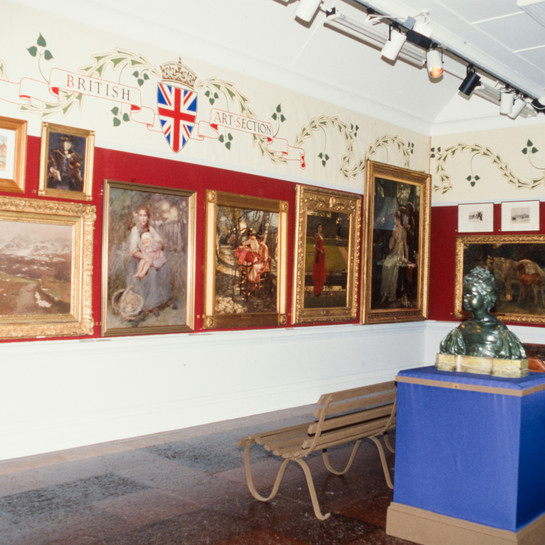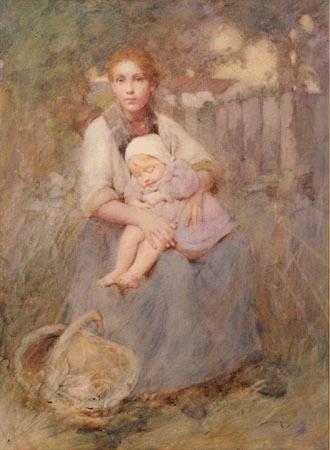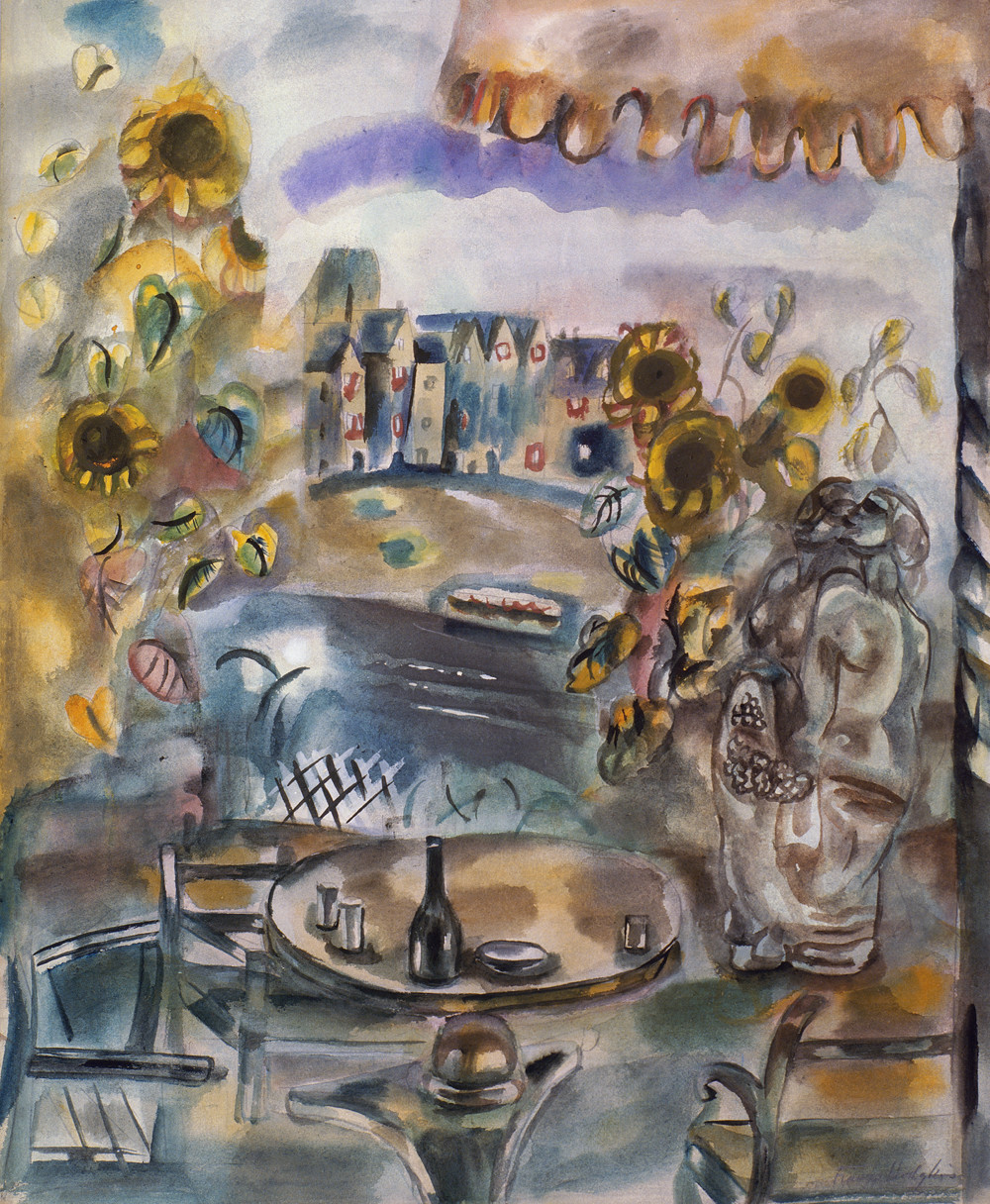William Lee-Hankey
British, b.1869, d.1952
"We’ve been in the meadows all day"
- c. 1904
- Watercolour
- Presented by the Canterbury Society of Arts, 1932
- 1540 x 1235 x 80mm
- 69/310
Tags: baskets (containers), buildings (structures), children (people by age group), double portraits, families, farms, fences, hats, infants, mothers, people (agents), trees, women (female humans)
English painter William Lee-Hankey had a studio at Étaples in northern France, a location popular with artists from Britain, the United States and Australasia. Like many, he was drawn to what he saw as picturesque rural surroundings – market scenes, fields and working people. His beautiful watercolour, however, romanticises a tougher reality. Peasants made up the largest socio-economic group in France until the mid twentieth century and women were an important part of that workforce, representing forty per cent of all agricultural labourers in 1911. They combined farm labour with domestic tasks and often the two overlapped, as for this young woman who rests with her child after a long, shared day in the field.
Ship Nails and Tail Feathers, 10 June – 22 October 2023
Exhibition History
Weight of Sunlight, 15 September – 16 September 2017
In 1904 leading English watercolourist William Lee-Hankey built a house at Le Touquet, northern France, and acquired a studio at nearby Étaples, which was then a thriving artist colony filled with British, American and Australasian artists. Inspired by the work of French painter Jules Bastien-Lepage, and the aesthetic potential of the region’s inhabitants, he painted industriously – rustic market scenes, workers and paupers, women and children – in a bold, individualistic style. This work was first shown in Lee-Hankey’s 1906 solo exhibition in London. An article on the artist published at this time applauded how strongly he felt ‘both the picturesqueness and the pathos of the peasant’s struggle for existence’, finding ‘in the simplicity and unaffected naturalism of the workers in the fields a degree of poetic suggestion which is discoverable nowhere else.’ Further nailing the attractions of France, the review went on to note that ‘The British peasants have lost the character which made them formerly worthy of the artist’s attention’.
This large watercolour of a peasant woman out in the fields with her sleepy child is a good example of the Victorian taste for sentimental figure studies. It is also the kind of intimate portrait for which William Lee-Hankey is best known and was produced at the high point in his career, when he commanded high prices for his work. It was first exhibited in New Zealand at the ‘International Exhibition’, Christchurch, from 1906 to 1907. Lee-Hankey was a member of the British Newlyn School which favoured a naturalistic style of painting. He was also influenced by the French artist Bastien Lepage (1848 -1884), who painted peasant life in an Academic Realist manner. Lee-Hankey was born in Chester, England. Following art studies there, he went to the Royal College of Art, London, then to Paris. Back in London by 1893, he began exhibiting at the Royal Academy in 1896. In the early 1900’s, however, he returned to France.
(Label date unknown)
